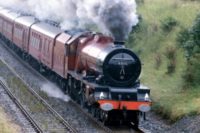Two unrelated railroad accidents – one of them fatal - have resulted in four new safety recommendations from the National Transportation Safety Board (NTSB).
In its investigation of a railroad employee fatality in Kansas City, Kansas that occurred on Sept. 29, 2015, the NTSB determined the probable cause of the accident was a foreman being in the gage of the track, for unknown reasons, while a train switching movement was being performed by another crew. The Union Pacific Railroad foreman died after being struck by a remote-control train during switching operations. The NTSB’s report also states inadequate radio communications and inadequate work coordination between crews working in the yard contributed to the accident.
Critical v. non-critical alarms
In the course of the investigation the NTSB learned Union Pacific employees received frequent, non-critical, man-down alarms which the NTSB believes likely reduced the attention and reaction crewmembers made to actual critical alarms. A man-down alarm is an audible warning transmitted of the yard’s radio channels from a remote-control unit (used to remotely control locomotives in the yard) indicating the remote-control unit is not in a vertical position and its operator may be in danger. As a result of the investigation the NTSB issued a safety recommendation to the Union Pacific Railroad to develop and implement a modification to the man-down alarms that would allow workers to differentiate between legitimate and non-critical alarms.
A broken wheel
The agency also investigated a May 6, 2015 derailment near Heimdal, North Dakota. In that incident, a broken wheel led to the derailment of six of the 107 loaded tank cars carrying crude oil in a Burlington Northern Santa Fe crude oil unit train May 6, 2015, near Heimdal. No injuries or fatalities were reported in connection with the derailment, however five of the derailed tank cars breached, releasing about 96,400 gallons of crude oil. A fire ensued, forcing the evacuation of about 30 people from Heimdal and the surrounding area due to the smoke plume.
The NTSB determined the left wheel, in the second position on car 81 was broken due to a vertical split rim which led to catastrophic failure of the wheel due to multiple overstress fractures. As a result of the investigation the NTSB issued two safety recommendations to the Federal Railroad Administration to research and evaluate wheel impact load thresholds and to mandate remedial actions for railroads to avoid or identify mechanical defects identified by wheel impact load detectors. A third recommendation was issued to both the FRA and the Association of American Railroads seeking collaboration in evaluation of safe peak vertical load thresholds to determine remedial actions for suspected defective wheel conditions in high-hazard flammable train service.
The Heimdal, North Dakota, railroad accident brief is available online at http://go.usa.gov/xndbK and the Kansas City, Kansas, railroad accident brief is available at https://go.usa.gov/xndbN.





